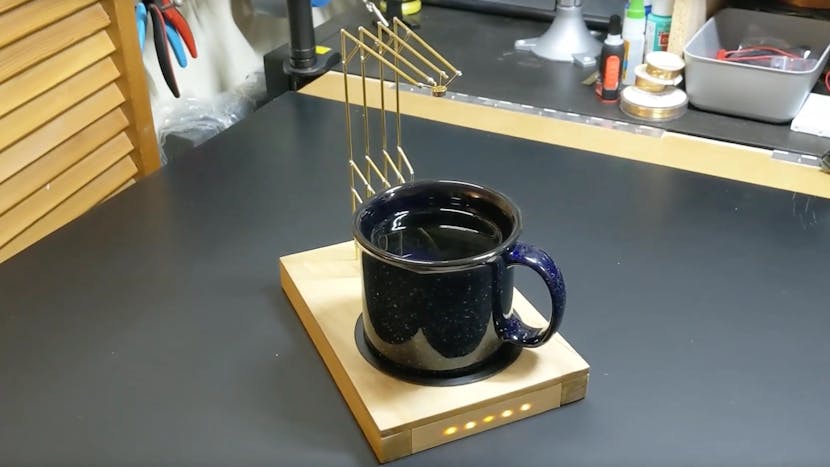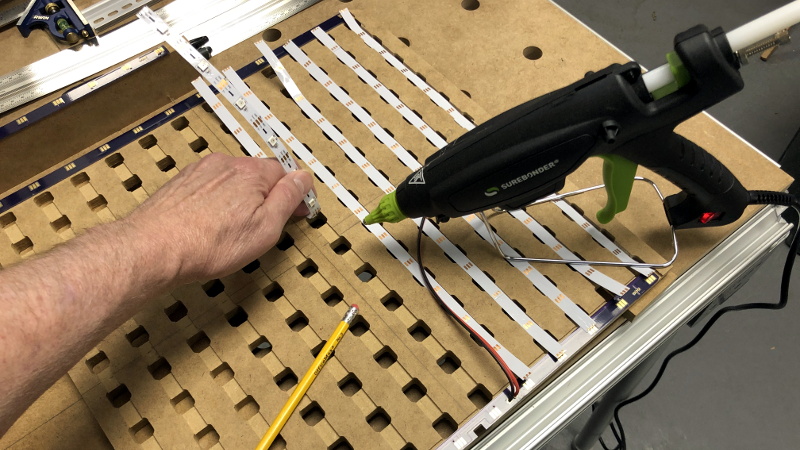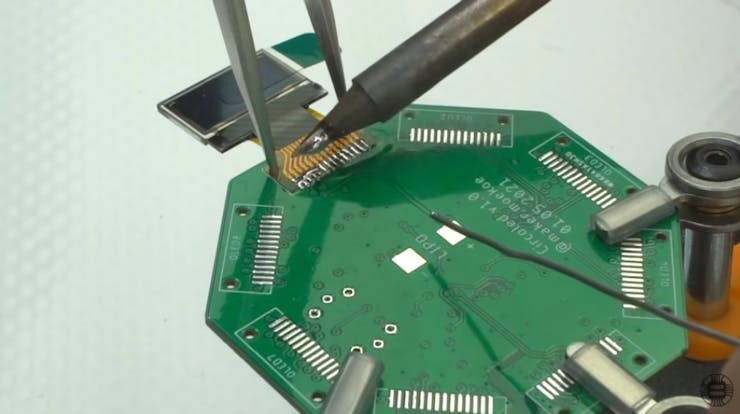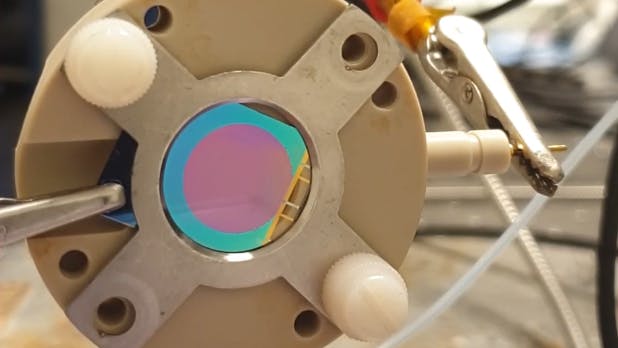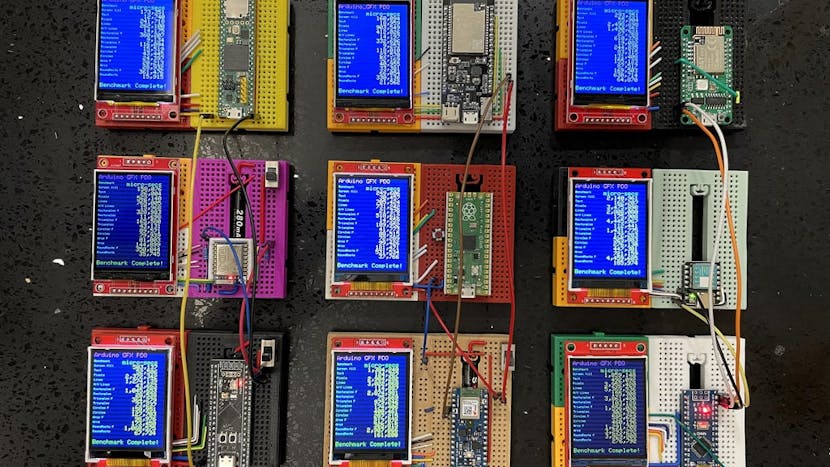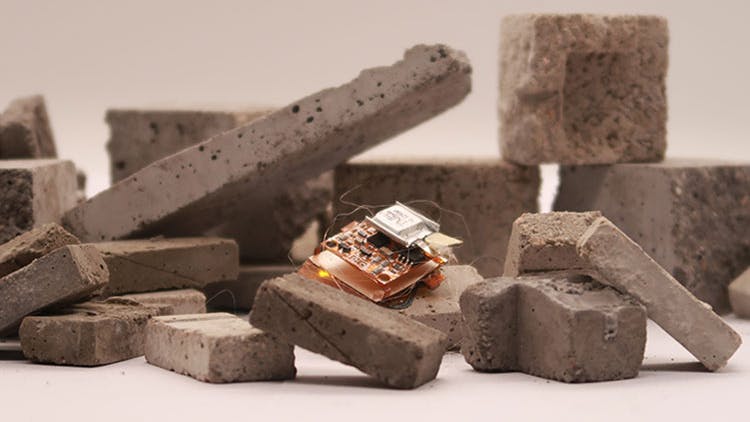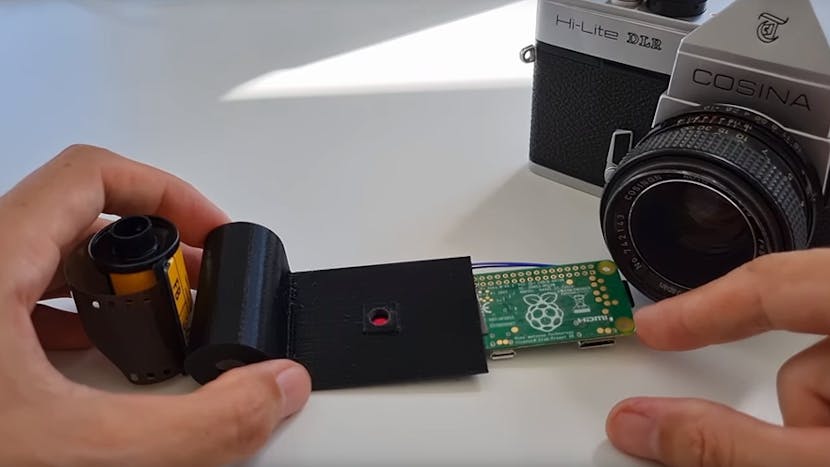While I rarely drink hot coffee, there seems to be a sweet spot between scalding and lukewarm, where it doesn’t burn but emits a sufficient amount of heat when imbibed. You could take a guess at this temperature by the steam coming off of the surface of the liquid, and how long it’s been sitting. For a more direct way to sense this vital stat, YouTuber Make Fun Stuff has come up with a non-contact beverage temperature monitor.
The device holds an IR sensor on top of the cup, using a crane-like linkage structure that’s soldered out of 2mm brass rods. In addition to providing mechanical support, these rods transfer electrical signals to the sensor, as what turned out to be a beautiful angular circuit sculpture. Bent wire was also tried here in multiple configurations, but this acted more like a spring than the rigid platform that was needed.
